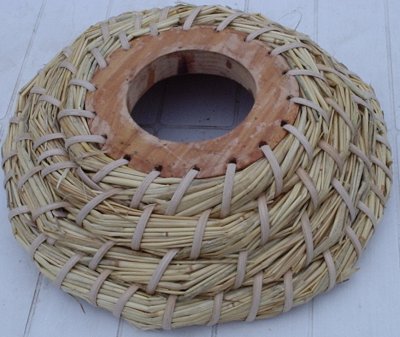
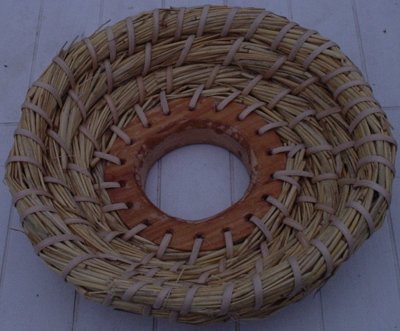
John Haverson's version of Claude Bralet's 'ruche sauvage' (wild hive)
(for Claude Bralet's original version, click here)
Construction
The shallow straw dome was made by standard skep-making technique using a flat cardboard template with a radius of 17 cm so that the volume of the box under the dome is almost spherical. The dome straw rings are extended until the lower ring is a tight fit in the box. The dome is retained by a 'circlip' ring of rattan, hazel or willow; bent when wet and screwed in place under the lowest ring of the dome while holding the top of the dome level with the top of the box.
Below left: Top and underside views of dome and top ring (prototype 3, 18 holes).


The ring is made from 30 mm wood 165 mm outside diameter, 100 mm inside diameter. There is a 10 mm chamfer on the top outer edge of the ring to facilitate drilling the holes at an angle.
Below left: Side view of dome.
Below right: The dome is inserted in the top box. The box is hexadecagonal and the
staves are biscuit jointed. The inside diameter between parallels is 336 mm.
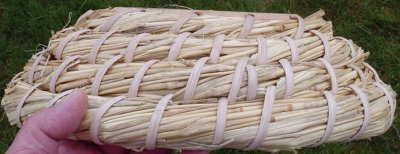
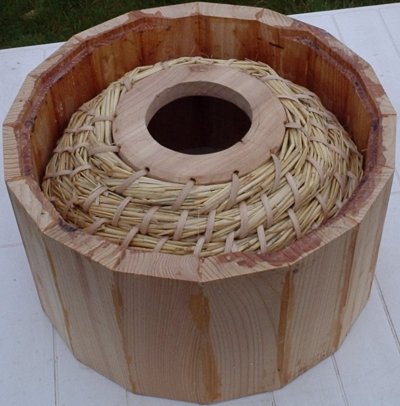
The boxes were initially made as round 'Warré' hives with an internal area just less than 900 sq cms. The box has a 'diameter' of 336mm between parallel faces. The timber is 25 mm thick cedar with 210 mm long staves cut at a maximum width of 76.8 mm with sides angled at 11.25 degrees. A 10mm x 10mm internal rebate was cut on ten of the sides should topbars be required; a chisel is used to 'fettle' neighbouring staves. A router could be used to cut the rebate. Later boxes were made of 30 mm thick timber with the same stave width.
The edges of the staves are joined with two biscuits per edge, glued and clamped with rachet straps and spacer blocks to allow excess glue to ooze out. Excess glue was trimmed off; the boxes vented for a year and inner joints and end grain sealed with molten beeswax.
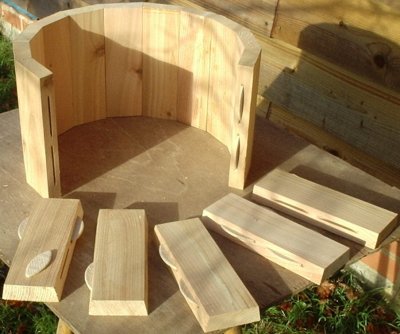
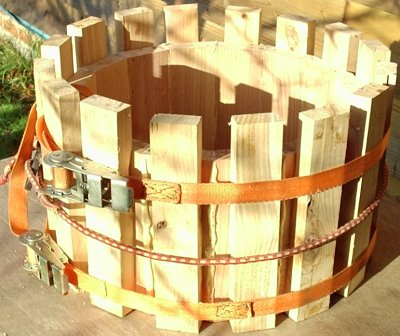
For construction options including windows etc for other round 'Warré' hives, click here.
Flexible wood spales have been fitted into blind holes drilled in the central and lower boxes. Spales are arranged to support comb but minimise brood comb disruption, particularly in the central areas.
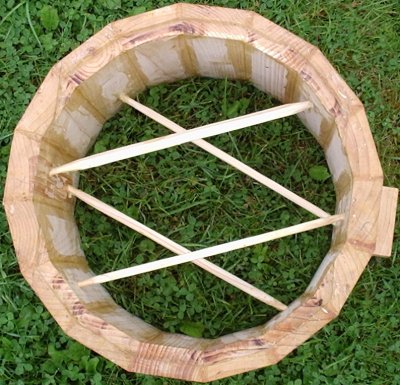
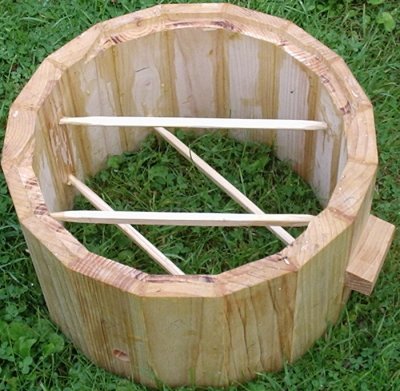
9 September 2012
Below: a 3-box wild hive. The entrances are south facing the upper one is only half a hole. The hessian sacking (right photo) is to deaden noise of rain on the copper dome (left photo).
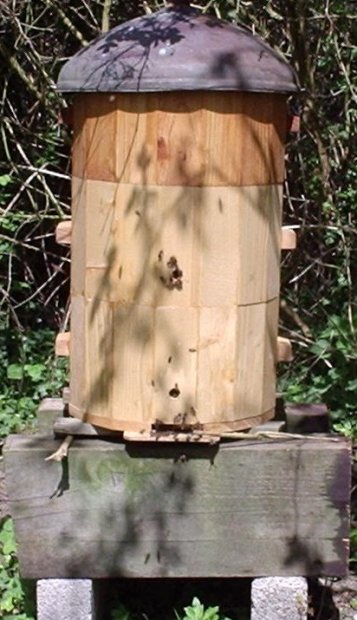
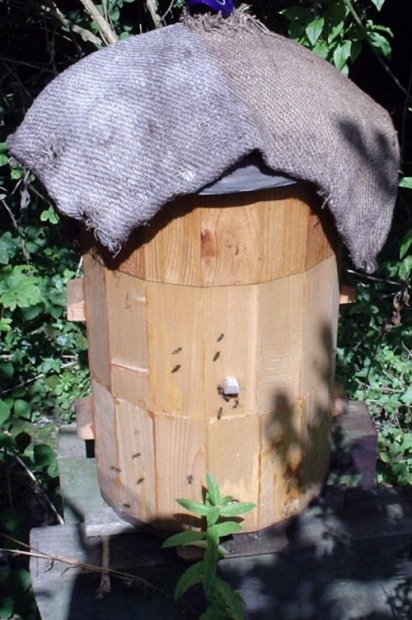
Below: Viewed from below upwards through a stand. The long side comb is on the east side of the hive.
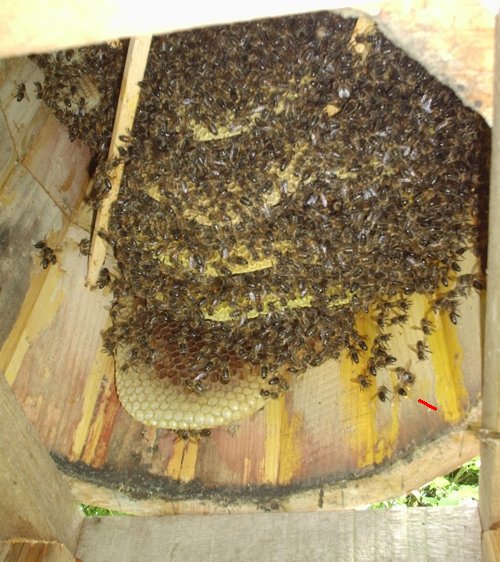
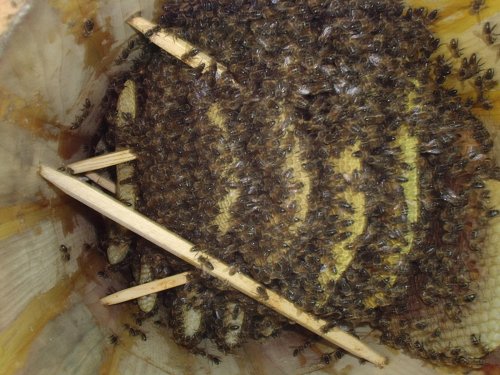
The heft was solid but a bit one sided. The bees were busy foraging on ivy with much yellow pollen coming in. A pollen carrier is indicated with a red line (above left). They appeared to take no notice of the intrusion.
11 January 2013
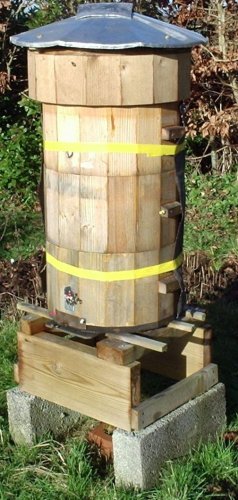
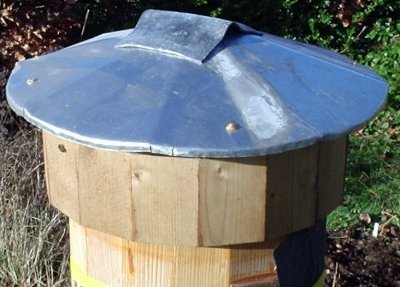
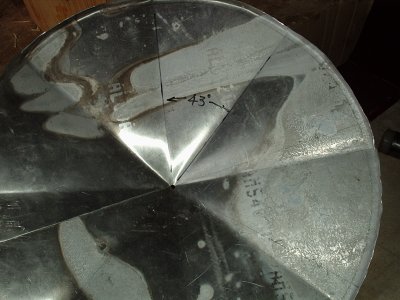
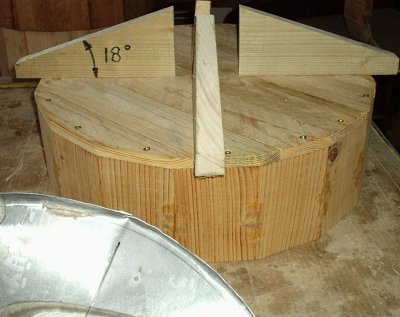
The above photos show a roof design for a 'round Warré' hive. The same design could be used on a wild hive. The small hole at the apex is capped with a piece of lead sheeting.
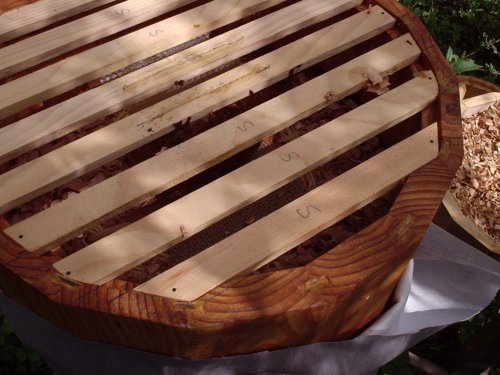
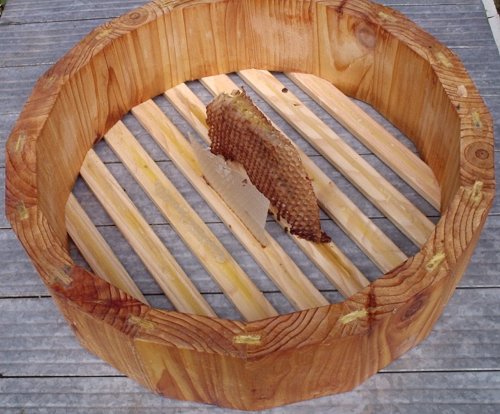
The super (above) comprises a shallow 'ring' fitted with top-bars with starter strips and a ladder comb.
Below: The hive supered. The breathable builder's cloth used through the winter was retained to protect the joint between the super and the main hive body.
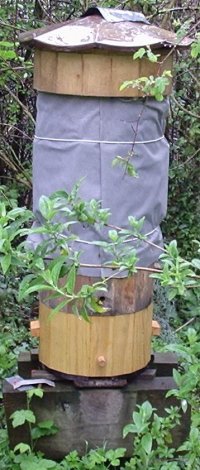
13 July 2015
Below: the super filling with honey
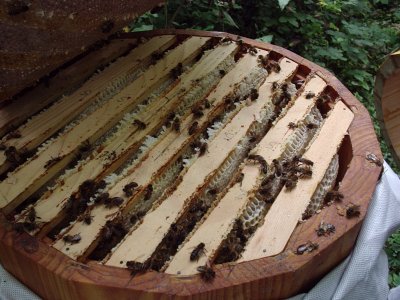
25 September 2015
At the end of the 2015 season, the hive/colony weighed 50 kg with 4 boxes (with skep in top) and a super. The super was harvested and contained very clear honey comb apart from a little browning over the depriving hole.
Below: the harvested super
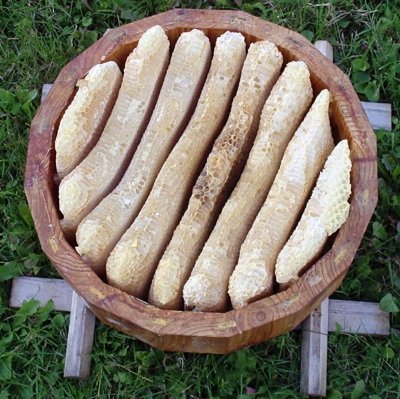
The hive was still heavy with bees on all
combs right down to the floor. It took two people to lift it to change the floor. There
were few bees in the super but as the hive was so full, an empty super was put back above
the skep, under a quilt box. This will be removed it when activity subsides gooing into
winter.
David Heaf's version of Claude Bralet's 'ruche sauvage' (wild hive)
Claude Bralet's 'ruche sauvage'